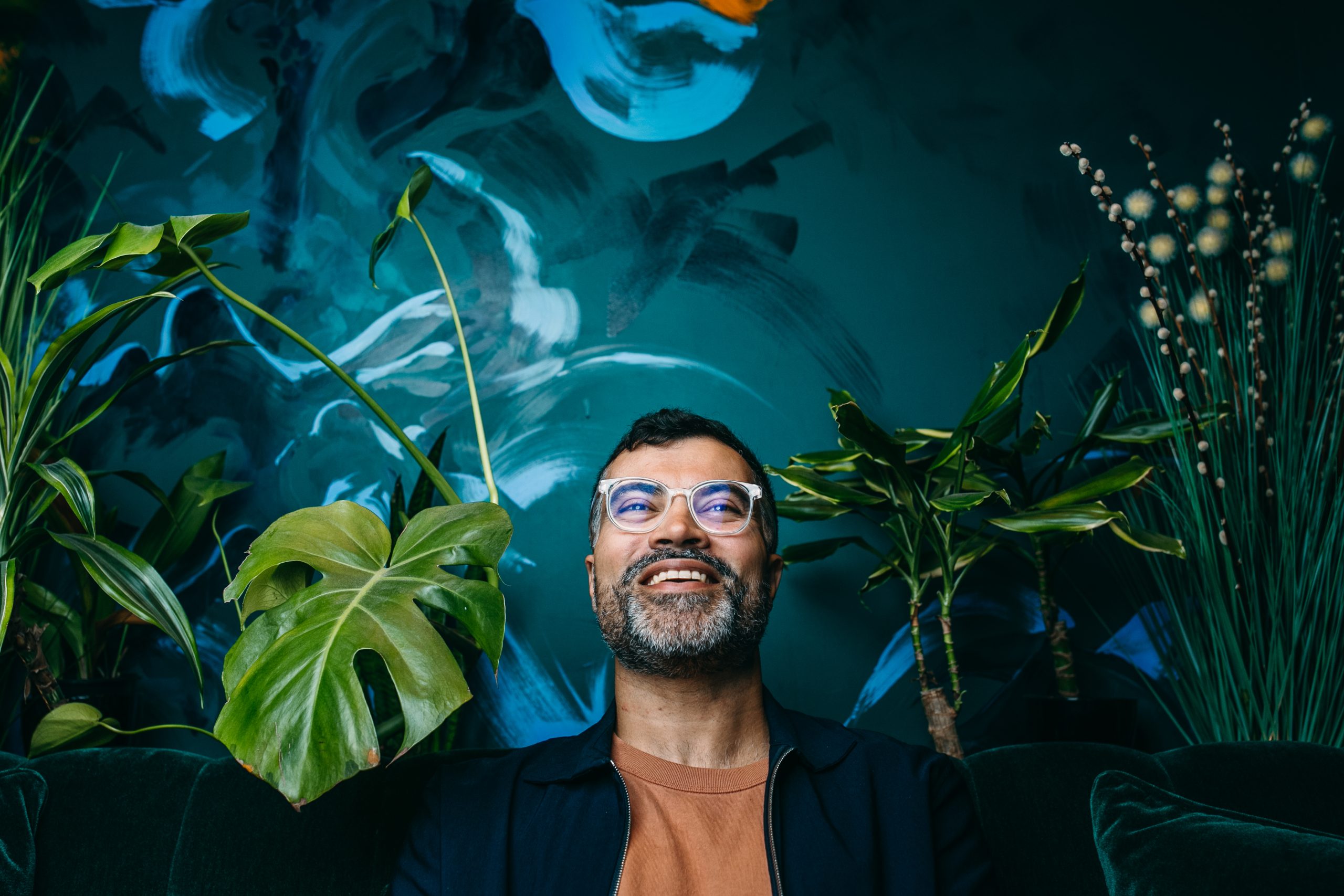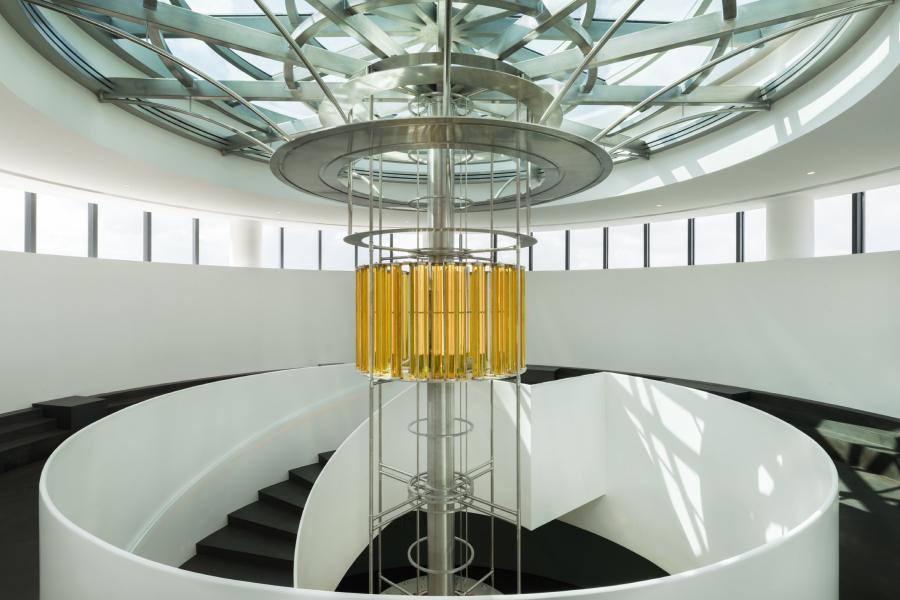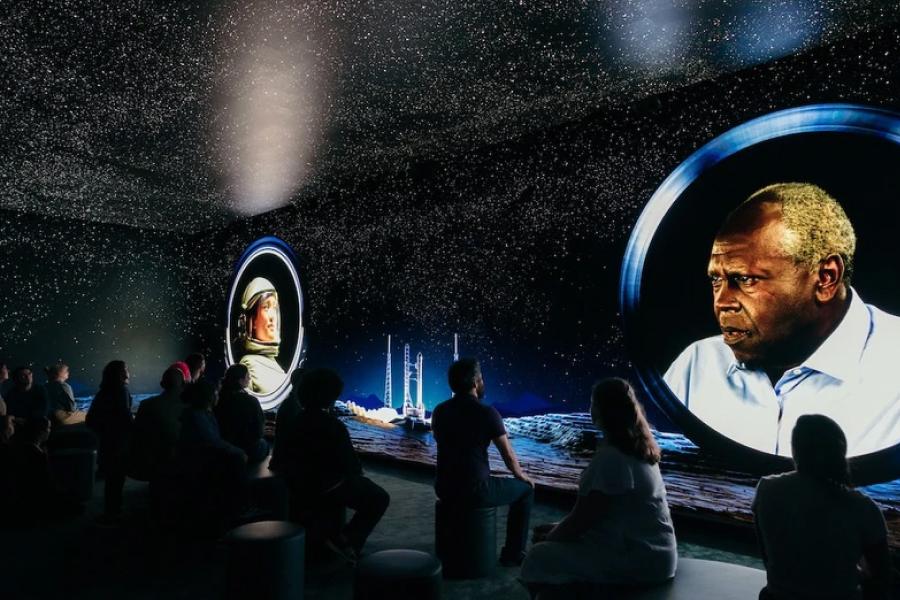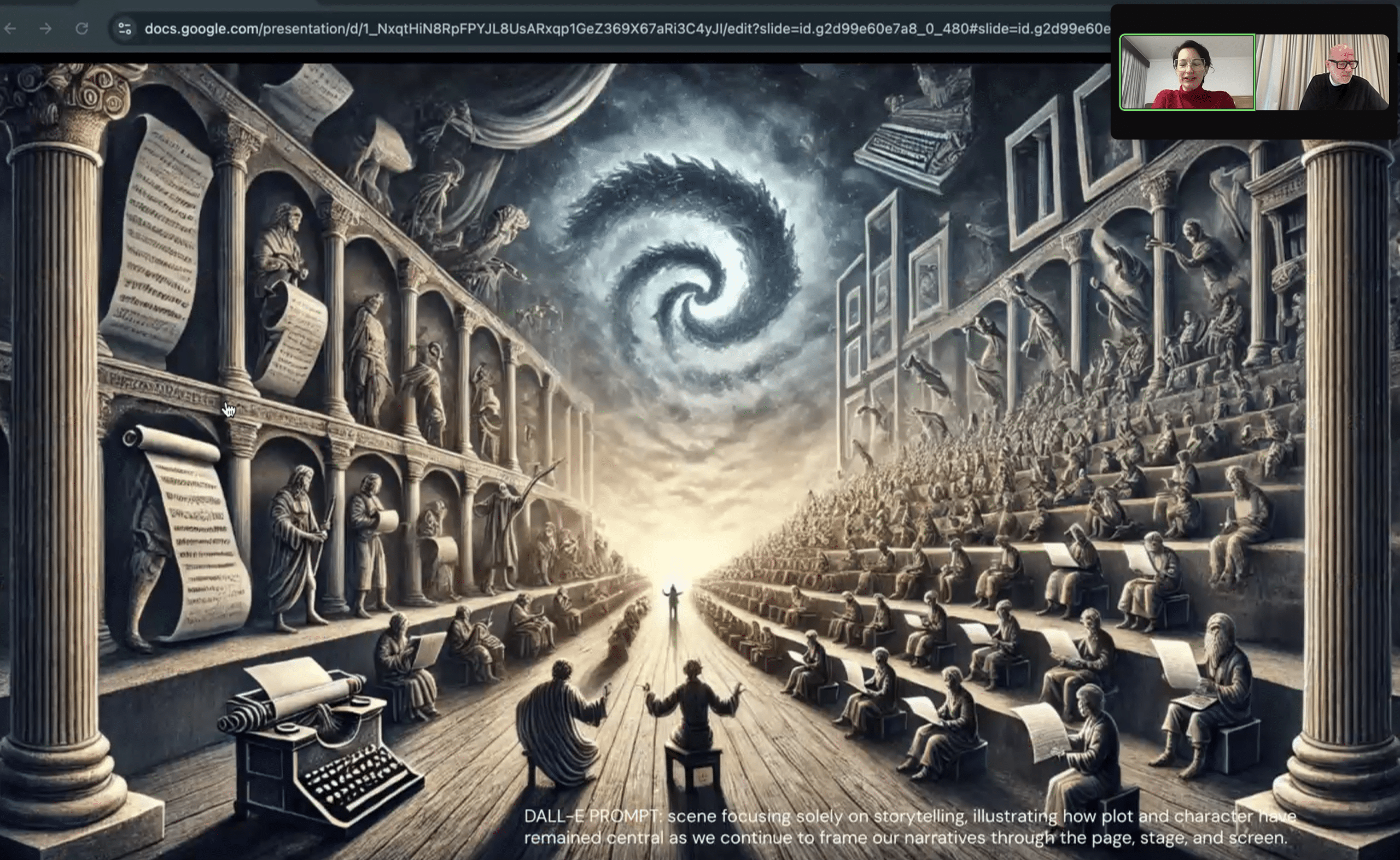Sound baths are now everywhere – even on your smartphone…
We are only just beginning to understand the true power of sound. Sound Therapy shows the way, with many reports supporting sound healing not only as a means of deep relaxation, but also as a way to unlock altered states of consciousness for greater creativity, connection, clarity, balance and insight – without the need for psychedelic drugs. (See also Tom Middleton and White Mirror’s work in the realm of audio-pharmaceuticals in Experience As Medicine.)
However, sound baths aren’t for everyone. For Brian d’Souza, Founder & CEO of Swell Studio and a former DJ under the alias Auntie Flo, finding ways to get people into the moment and a state of flow through music has been a core part of his work for decades. He wanted to explore how we might build the technology to make sound therapy available for everyone.
In this WXO Campfire you’ll explore how you might unlock the healing power of sound therapy in your experiences, how technology is enabling this in practical and everyday ways, and the potential impacts for wellbeing, using learnings from d’Souza’s journey to date.
d’Souza studied Music Psychology and later Sound Design, learning about Mihalyi Csikszentmihalyi’s definition of flow as well as the new world of immersive sound, architectural acoustics, binaural beats, surround sound, loudspeaker technology, and more to achieve a positive brain-body response.
He set up Open Ear Music 17 years ago to design playlists for branded spaces such as hotels and gyms to try and solve the problem of brands not paying attention to sound, or approaching the design of sensory spaces with a lack of insight or understanding. He’s also the founder of the State of Flo record label and Ambient Flo radio station.
And five years ago, d’Souza and Swell asked the question: could a sound therapy experience be delivered on mobile and therefore be available any time, anywhere, to anyone? He trained as a sound therapist at the British Academy of Sound Therapy, worked with a variety of sound therapists to explore how sound frequencies can be used as building blocks to affect the listener, and created immersive spatial environments on Dolby Atmos, L-Acoustics and Sony Ark 360.
At the end of this process, Swell launched SwellSpa, using innovative generative AI sound technology built with the University of Arts’ Music and AI MIMIC lab. The app makes personalised “Sound Journeys” based on a simple selection of recordings, captured in places of natural beauty around the globe.
SwellSpa delivers an end-to-end, purposeful experience helping listeners explore different conscious states, challenging time perception mechanisms and encouraging them to follow a practice that they call Patient Listening. The app was tested with neuroaesthetics lab Kinda Studios and Goldsmiths University, as well as a variety of wellness and hotel brands.
The Rise Of Sound Therapy & Personalised Audio Experiences
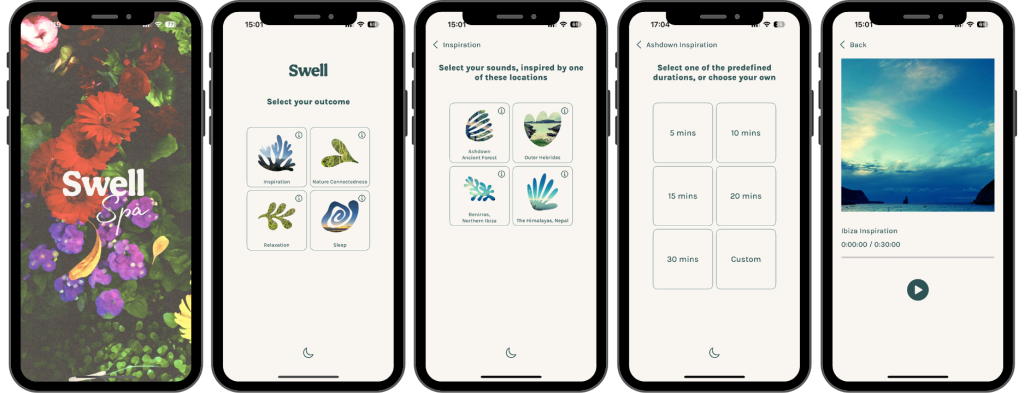
In recent years sound baths and sound healing sessions have become increasingly popular, helping attendees getting into a meditative and altered conscious state that borders on the psychedelic, but without the need for drugs. 40% of urban adults have attended or are interested in a sound bath, and 95% of those have had positive experiences helping them to feel calm, reduce stress, and relieve chronic pain.
d’Souza wanted to know from a music production point of view, why do these sounds and sound vibrations have such an effect? And how might we apply learnings from sound therapy to elevate the audio experience in different contexts?
Take spas: the music is typically generic and inoffensive, more of a backing track than a therapeutic aspect of the spa or massage experience. The SwellSpa app was created to help improve the experience, elevating sound above mere background noise through playlists created using unique, generative AI sound technologies. In collaboration with sound therapists, Swell recorded the sounds from a sound bath using binaural and spatial audio, and played it back to test subjects via headphones on their mobile phone.
The results were mixed, and perhaps surprising: for those who had previously experienced a sound bath, it was a positive experience that triggered memories of the live situation. For those who hadn’t had a sound bath in the past, they found the audio quite dark, disconcerting, and hard to relate to.
The team went back to the drawing board to discover how different aspects of sound could be used to make it a more appealing experience, undergoing scientific testing of a pilot app with Kinda Studios and Goldsmiths University. They tested deep relaxation by looking at reduction in heart rate, as well as triggering a state of awe and creative thought by looking at uplift in alpha ways on an EEG. Participants were 57.4% more relaxed compared to urban sounds, and 29.8% compared to silence.
They discovered that agency in a sound therapy session is key: the individual has to be able to listen in the way that is right for them. To achieve a state of “patient listening”, a practice akin to deep listening that involves mindful meditation and focused attention, people need to feel at one with the space and in the moment – a challenge in our era of noisy environments and an overcrowded attention economy.
The intentionality of the experience is also key here: we need to meet people where they are, understanding that we are all strange and wonderful, with different triggers. Some people are prone to sensory overwhelm, and some respond to sound in a negative way. One person’s music is another person’s noise.
We need to ask how we can be intentional, without knowing exactly who our audience is: can we create layers within the soundscape to regulate people’s nervous systems? How can sound be used as part of onboarding and offboarding, or as a physiological amuse bouche between parts of the experience? How could we use sound in a more nuanced way?
The 3 Ingredients Of A Sound Therapy Audio Experience
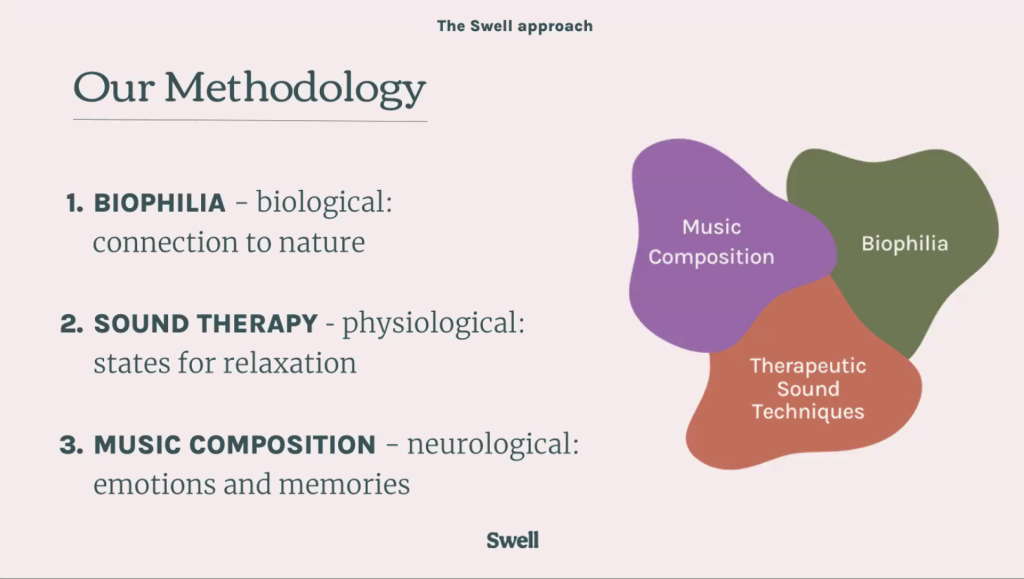
SwellSpa uses 3 main ingredients to create a personalised audio experience:
- Sound therapy & states of relaxation
- Biophilia, nature sounds, and transportation.
- Music composition, triggering neurological, emotions and memories
The sound therapy experiences on the app follow a few shared principles:
- Focus on journeys rather than genres. Genres box people in, but sound therapy is that it can transport people. A journey can relate to places, like the Himalayas or Ibiza, or a story.
- Use generative music that’s unique to every listen. This reduces both listener fatigue and staff demotivation, unlike traditional playlists. The functional delivery is kept the same, but the flow is different each time. It also allows time to be elastic and gives the agency of time to the listener: if you can allocate a certain amount of time to listening, you’re more likely to commit to it.
- Support patient listening. This is listening that’s purposeful, meaningful, and active, with a start, middle and end. It’s akin to a storytelling experience.
While the SwellSpa app is currently designed to work in treatment rooms (such as an accompaniment to a massage), for touchless treatments (such as through vibroacoustic furniture, already available at “Swell rooms” suitable for locations like conferences and airports), and bespoke treatment menus (such as localised recordings or syncing with products), there’s also the potential for it to increase wellness outside a spa setting, such as in a home bedroom or bathroom, or through the app.
The WXO Take-Out
The work being done by d’Souza and Swell Studio is another exciting example of how emergent audio technology and increasing understanding of the healing potential of sound is being used to take experiences from not just entertaining and engaging, but also therapeutics.
Sound is a deeply immersive medium, pulling us into the present: it expands your present in a really intense way. For those of us in the business of getting people to fully experience the present moment and a state of flow, it’s a potent tool that technology like this enables us to use in experiences both extraordinary and everyday for greater well being.
So next time you’re designing an experience, ask yourself:
- How could you use sound to onboard or offboard people?
- How could you layer sound to regulate people’s nervous system and give them a moment of respite?
- How could you make sound into a product in your experience?
Want to come to live Campfires and join fellow expert experience creators from 39+ different countries as we lead the Experience Revolution forward? Find out how to join us here.

